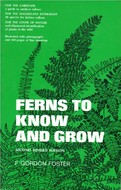by Dale Peterson
Not so long ago, people thought that animals were merely some kind of animated \”machine\”, merely responding to external stimuli in predictable patterns. Nowadays most people have accepted the fact that animals can indeed think and reason to some degree, and that they have feelings too. Haven\’t you ever seen your dog look guilty when you catch him in the middle of a chewed-up mess, or the blissful expression on a sleeping cat\’s face? In The Moral Lives of Animals Dale Peterson takes this idea even further, positing that animals not only have feelings, but a sense of morals as well. Ones that we can not only recognize, but also learn from.
You might think that the animals featured in this book are all of species known to be highly intelligent- chimpanzees that deliberately deceive each other, elephants that grieve for dead family members, blue jays that hide their food a second time when they think another bird might steal it. But there are also a lot of other \”lesser\” creatures mentioned, such as a bat who was observed to assist another in giving birth, or mere insects that play tricks on each other. And I\’m just barely scratching the surface here. The Moral Lives of Animals is rather heavy reading, thick with insights into animal and human behavior. A lot of it is looking into the question of why we have certain social rules, why humans (and animals) have evolved to feel certain emotions. It\’s very interesting. Often the author takes his time with a detailed introduction to a concept, but it\’s worth getting through the parts you might think aren\’t related, to see what his point is. And woven through the entire book is the motif of Moby Dick, as he contrasts two main characters\’ viewpoints on the mind of the great whale: Ahab who feels nearly guilty for pursuing it and views the creature as holding malicious intent, and Starbuck, who sees it merely as an animal to be captured for profit. These different attitudes say more about us as a species than about the whale (but whales get their own spotlight here, too). I appreciated the fact that Peterson pointed out more than once that the minds of animals should not necessarily be considered less complex or advanced as ours, but merely as other, as alien. Animals have their own different ways of thinking and perceiving the world, which is also reflected in their versions of morality…
I\’m not quite sure what else to say about this book, as quite a lot of it I\’m still mulling over in my mind to understand better. It\’s quite the read, one you want to go through at a leisurely pace, and I enjoyed it much.
I received a review copy of this book from Blue Dot Literary. It has not affected my opinion. Thanks, Tony, for giving me the chance to read this book!
Rating: 4/5 …….. 342 pages, 2011
More opinions at:
Dad of Divas\’ Reviews











